Grizzly vs Black Bear Tracks: A Careful Look
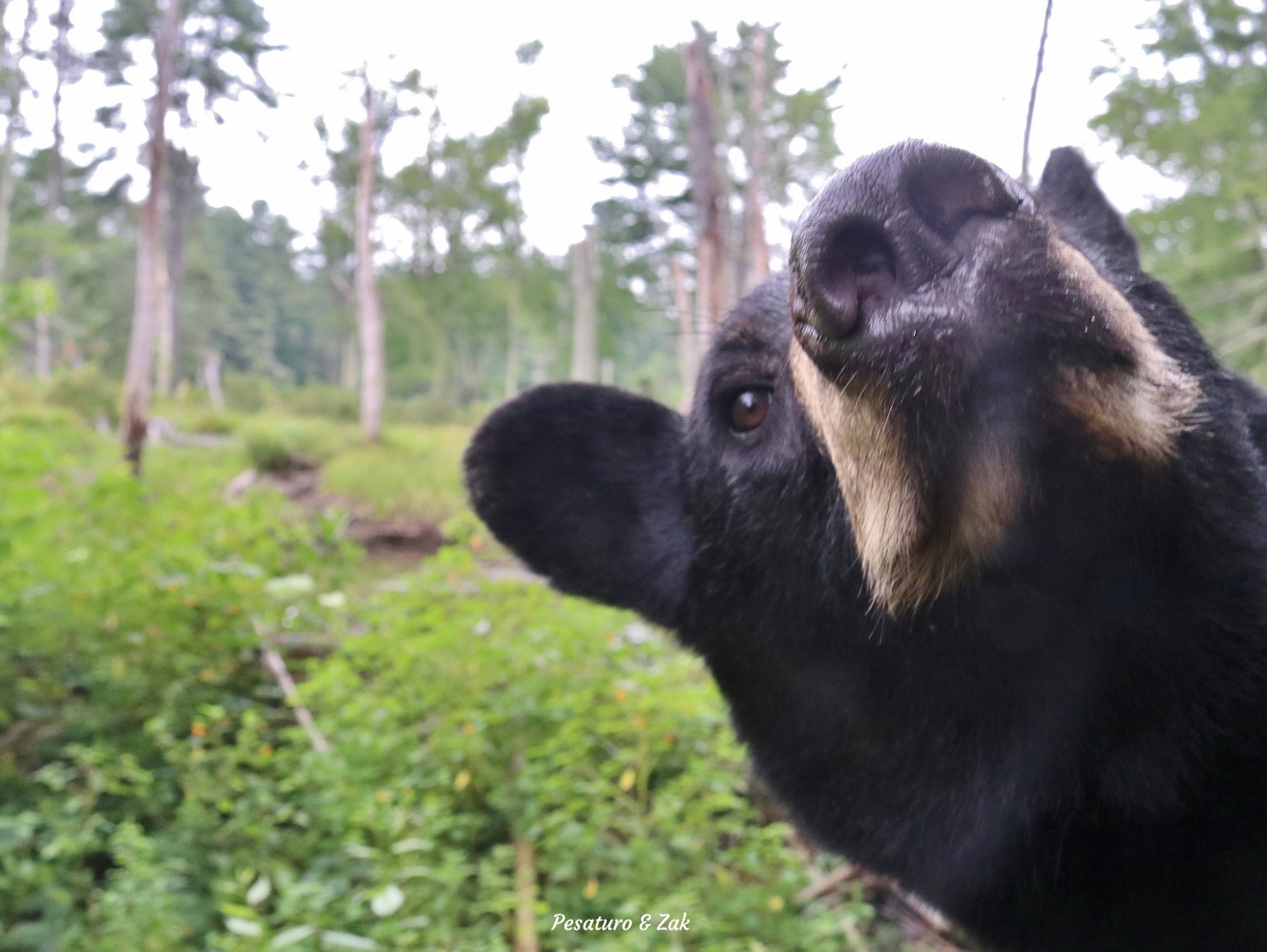
Black bears (Ursus americanus) currently range more widely than grizzlies (Ursus arctos) in the lower 48, but where both species roam they are sometimes confused. In a national park where animals are habituated to human viewers, you’re probably more likely to observe the actual animal than its tracks. But outside the parks, where animals are more cautious, you’re more likely to see just the tracks. The tracks of the two species are even more easily confused, and I have found that the best approach in distinguishing grizzly vs black bear tracks is to examine multiple features of multiple tracks.
Grizzly vs Black Bear Tracks
I’ve learned from experience that relying on one feature – tempting though it may be – is a common cause of error. The nature of the substrate, aging of the tracks, and individual variation in foot anatomy, can make one or another track feature unreliable. There may even be inconsistencies between tracks of the same animal within the same trail due to subtle differences in substrate.
Mystery Bear Tracks
Recently I found this lovely trail of tracks – our mystery bear tracks – in an overstep walk pattern in wet snow in Montana. An overstep walk is the perfect opportunity for careful analysis because the hind and front tracks land in separate spots so that they do not obscure each other.
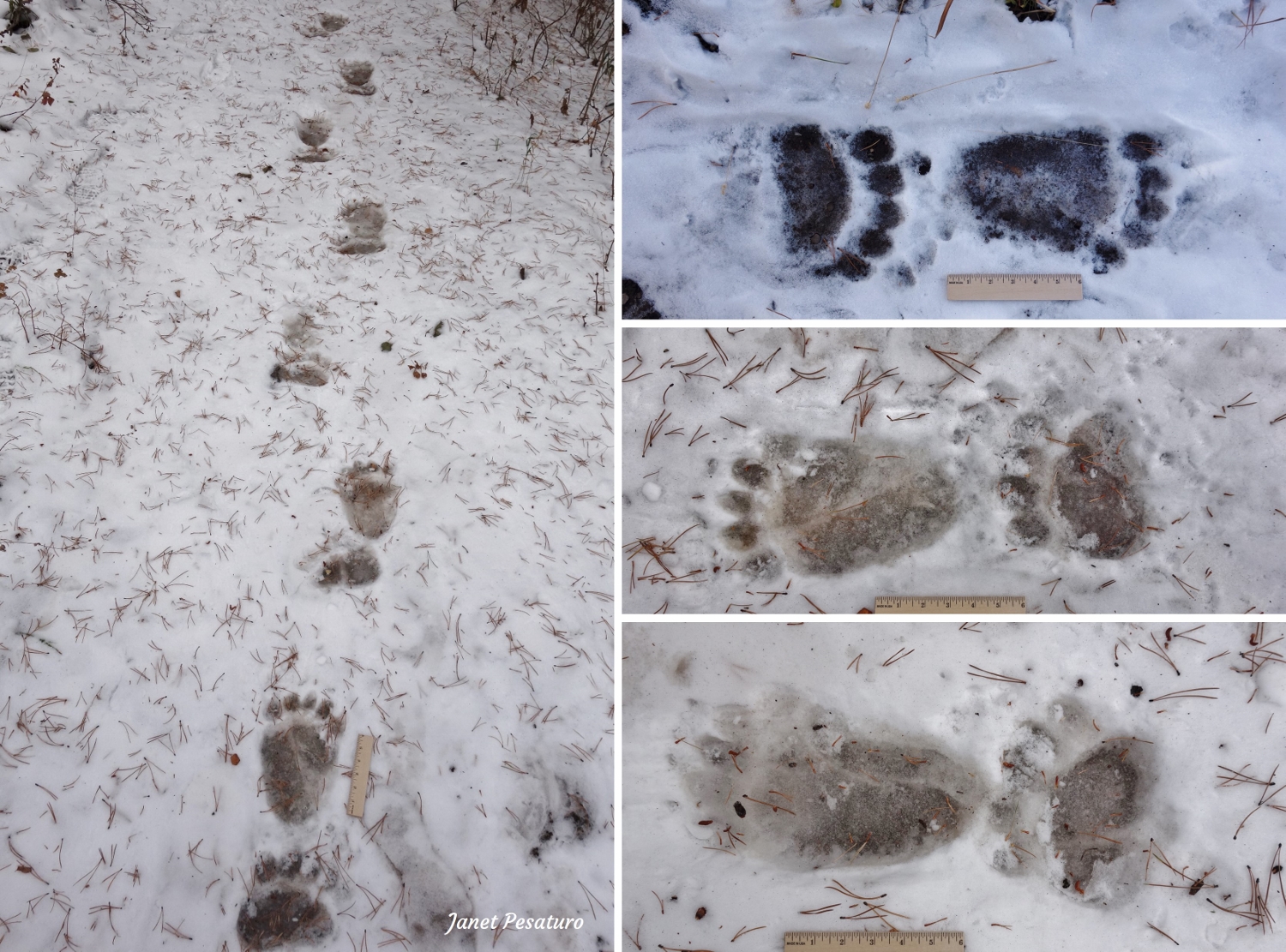
I chose three sets of front and hind tracks that were especially clear, and taking careful measurements, I identify them as grizzly with a reasonable degree of certainty. However, there was disagreement about them in online discussion, and that forced me to inspect them very carefully, much as the curious young ursid in the lead photo inspected our camera trap. I still think grizzly is more likely though I am willing to be wrong and I invite you to share your opinion in a comment.
Known Black Bear Tracks
For comparison, here are some black bear tracks photographed by wildlife photographer Randy Robbins (check out Randy Robbins Photography to see his stunning work). Randy actually saw the bear making the tracks, so there is no doubt on this one. They are great for comparison to the mystery tracks I found because they too are dark tracks made in wet snow.
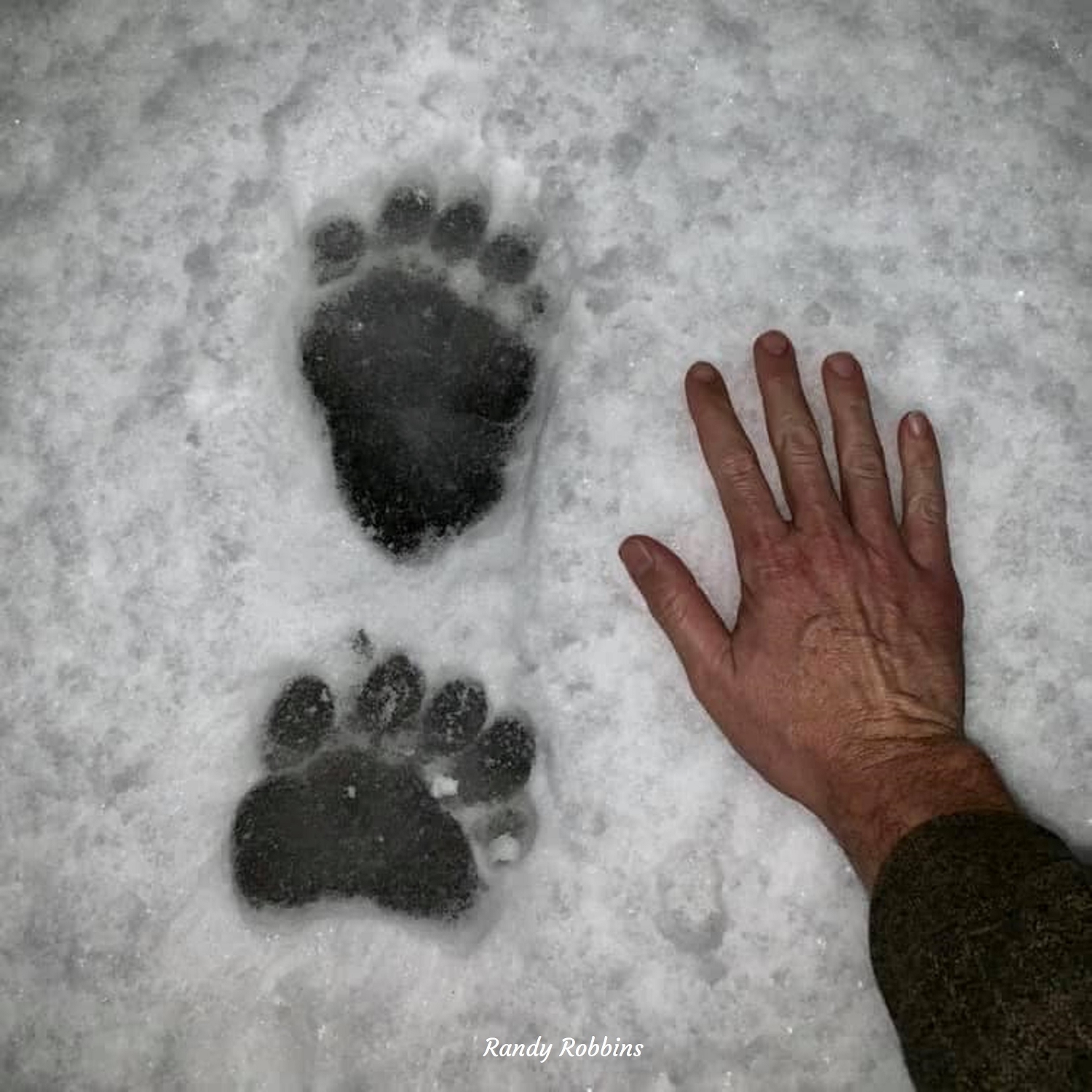
Distinguishing Track Features
In identifying my mystery bear tracks, I considered the first four features described below: claw length, the 5th toe / interdigital pad rule, amount of negative space, and track size. For comparison, I looked at the same features in Randy’s black bear tracks. At the end of the post, I added graphics and labels to the photos to show these features. Please refer to those during this discussion.
1. Claw Length
On their front feet, grizzlies tend to have longer, straighter claws than black bears (and you can review the reason for that Grizzly Bear Root Grubbing). Some trackers consider claw length to be the #1 distinguishing feature, and they use various rules of thumb. Rezendes, for example, uses the middle toe of the front track, and says that if the length of the claw is greater than the length of the toe, it’s probably a grizzly. If the length of the claw is less than the length of the toe, it’s probably a black bear.
However, Rezendes cautions that in tracks of 18% of Alaskan brown bears he tracked, claws were slightly shorter than the toe length. Elbroch and Mcfarland also caution that claw length is not a reliable distinguishing characteristic. Once again, it’s best to look at multiple features.
The claw mark for the middle toe of the front foot is evident in all three of my front tracks, and all are noticeably longer than the corresponding toe. (See photos with graphics in the next section.) That is consistent with grizzly. I am not sure if claw marks are present in Randy’s black bear tracks, so I did not label them.
2. Fifth Toe / Interdigital Pad Rule
This exercise helps you evaluate the arc of the toes of the front track. It is applicable only to front tracks, so it will be less accurate if applied to tracks in direct register patterns, where the hind foot lands on top of the front track.
In grizzlies, the front toes tend to be arranged in a shallow arc, sometimes almost a straight line. In black bears, the arc is more pronounced. Evaluate the arc carefully by drawing a line that passes through the proximal edge of the outermost toe (toe #5) and the distal edge of the fused interdigital pad (analagous to the palm pad of a human hand). This is the green line in the track photos in this post.
In deep substrate you need to be careful when deciding where the edges of the outermost toe and interdigital pads actually are. Use the “minimum outline” of each impression, which refers to the outline at the bottom of the track as explained here.
Interpret results as follows:
- If more than half of the innermost toe (toe #1) falls beyond the line, then the bear is probably a grizzly.
- If the line bisects the toe, then it’s equivocal and you need to look at other features.
- If more than half of the innermost toe falls behind the line, then it is probably a black bear.
It is best to apply this rule to multiple front tracks from the same animal, especially if the innermost toe does not fall clearly beyond or behind the line. In all three front mystery bear tracks, more than half the toe does fall beyond the line.But, since none lies fully beyond the line, I’ll give the skeptics the benefit of the doubt and say it favors grizzly but only slightly. There is room for disagreement.
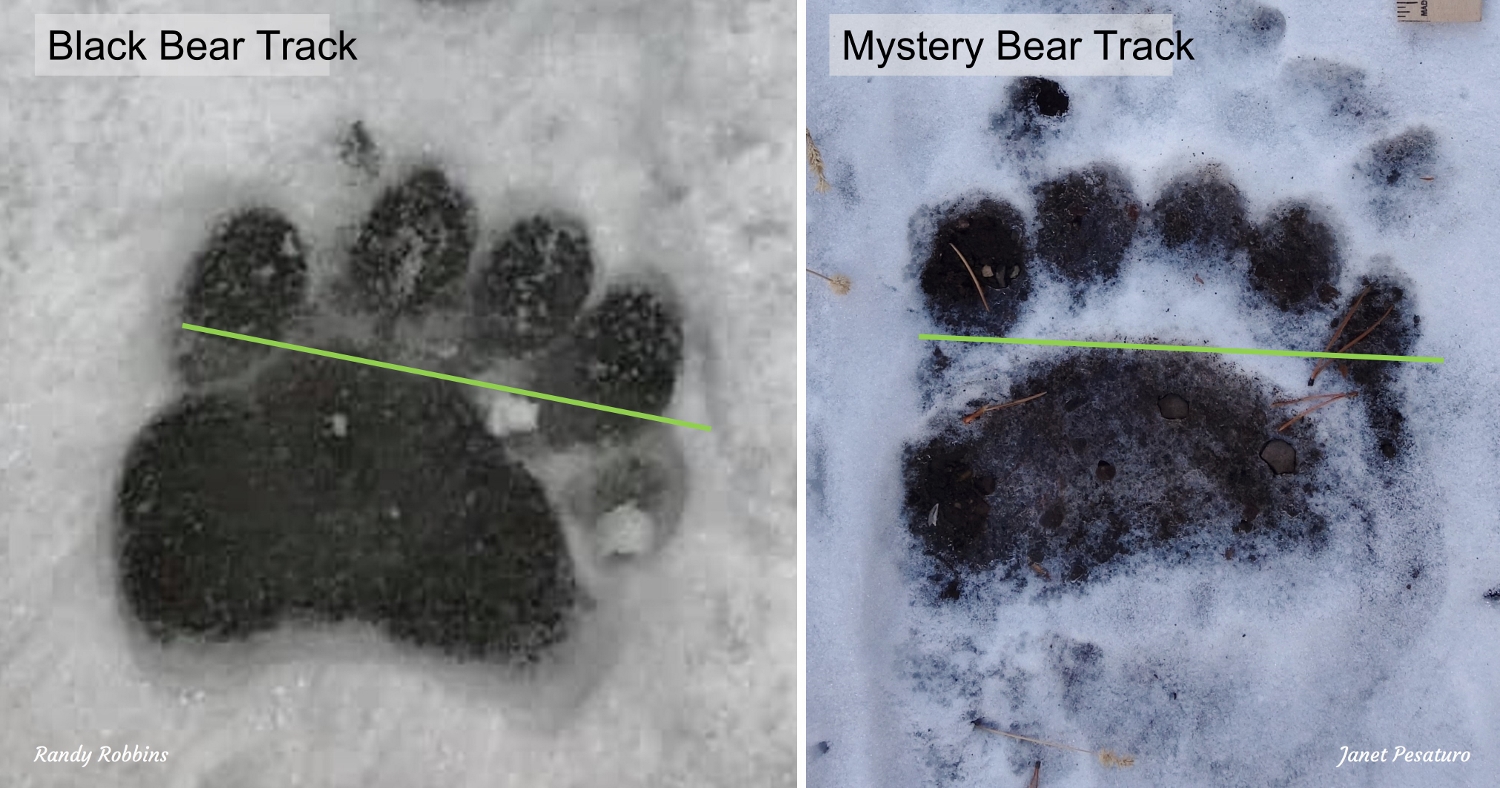
3. Negative Space
Compared to black bears, grizzlies have less fur on the bottoms of their feet and for this reason, there is less negative space in grizzly tracks. Toes may appear squished together, and there is no negative space between the interdigital pad and the heel pad. However, there is a crease between these two pads, and it may or may not show in the track.
Black bears have more fur between the toes and a wedge of fur in the “arch” between the interdigital pad and the heel. In good substrate, the wedge is likely to appear as negative space. But, in some substrates, that wedge may not be visible. Although two of the hind tracks in my example show no evidence of this wedge, one is ambiguous. There appears to be a wedge but this may be part of an irregularity in the substrate (see photos and their descriptions at the end of this post).
Elbroch and McFarland consider this a reliable distinguishing characteristic. But, since substrate affects the appearance of negative space, it’s best not to rely on it as the one and only feature.
4. Track Size
Because there is considerable overlap in track size of the two species, size is helpful only if the track falls outside the range for one species. For example, the length of the hind tracks in my mystery photos are beyond the range reported for black bears in two highly regarded tracking guides.
Elbroch and McFarland report a black bear hind track length of up to 8 and 7/8 inches. Apparently that includes claw marks, as they explain in their introductory material on track measurements. Rezendes reports up to 7 and 3/4 inch for the same parameter and he too includes claw marks. The 9 and 1/4 and 9 and 1/2 inch measures in my mystery hind tracks exclude the claws, so they are well beyond the reported range for black bear tracks, and therefore more consistent with grizzly.
5. Bonus Feature – Track Depth
Here’s a 5th feature which zoologist Vladimir Dinets explained on social media. Because of the heavy shoulder musculature, a grizzly’s front tracks tend to register more deeply than its hind tracks. That is not the case with black bears, which lack that heavy shoulder hump. In fact, as a black bear gains weight during hyperphagia, its hind tracks may be noticeably deeper under the weight of its prodigious belly.
I did not know to compare front and hind track depths when I found my bear tracks and I cannot tell from my photos if there is a difference in depth. But I will certainly keep this in mind during future tracking adventures.
Bear Tracks with Graphics for Visual Aid
Mystery Bear Tracks
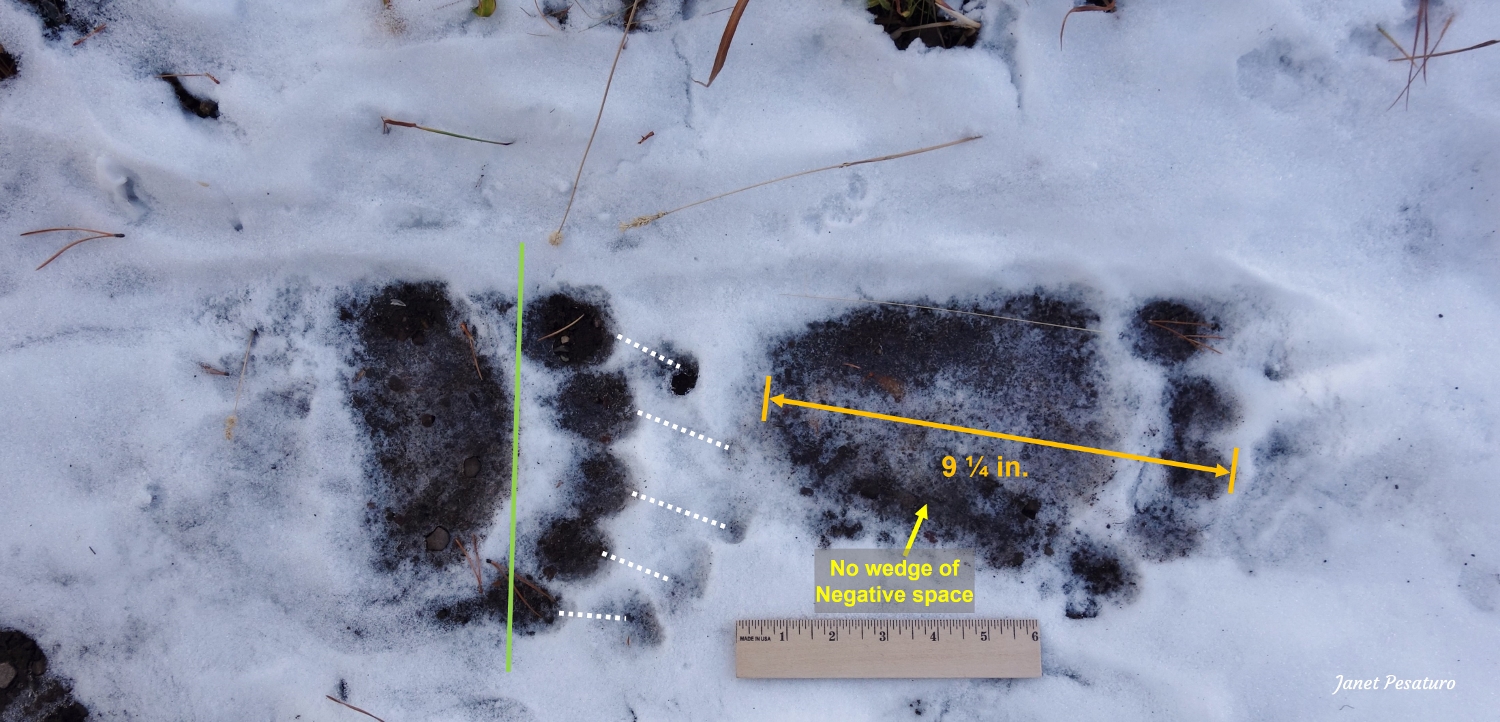
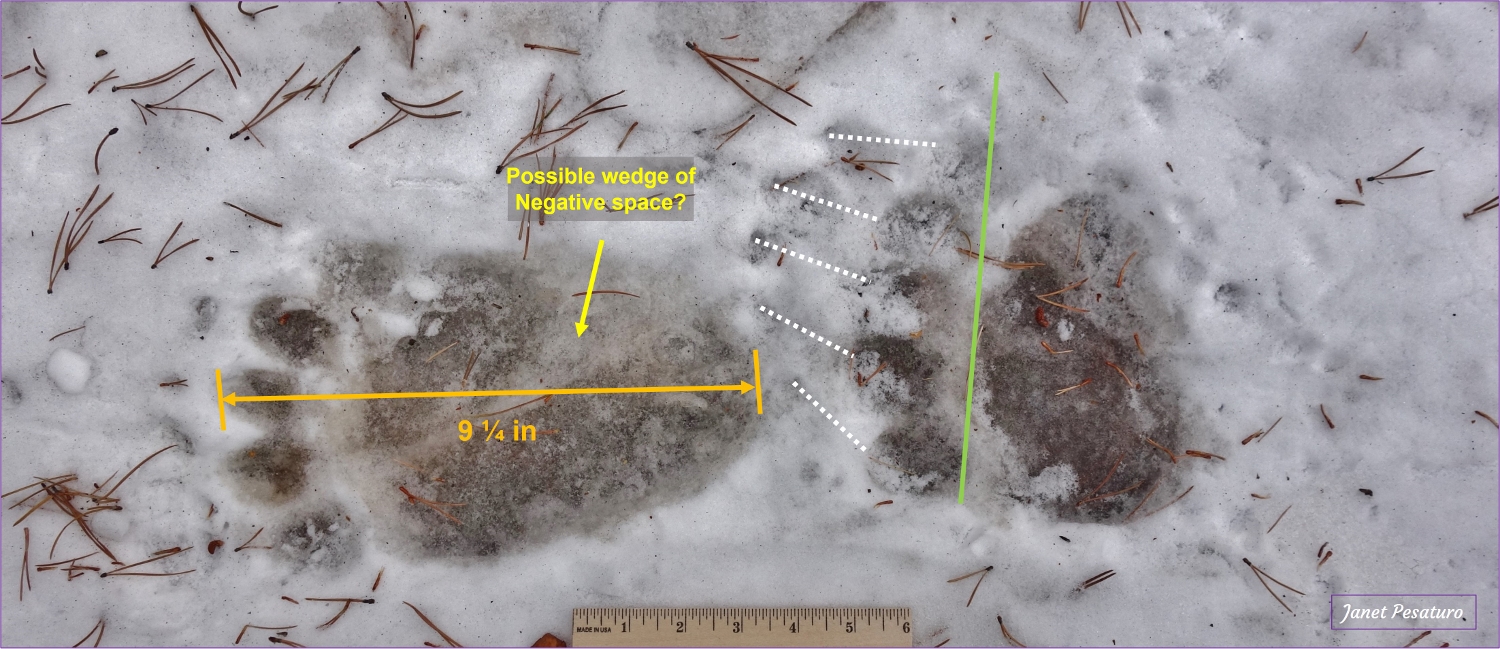
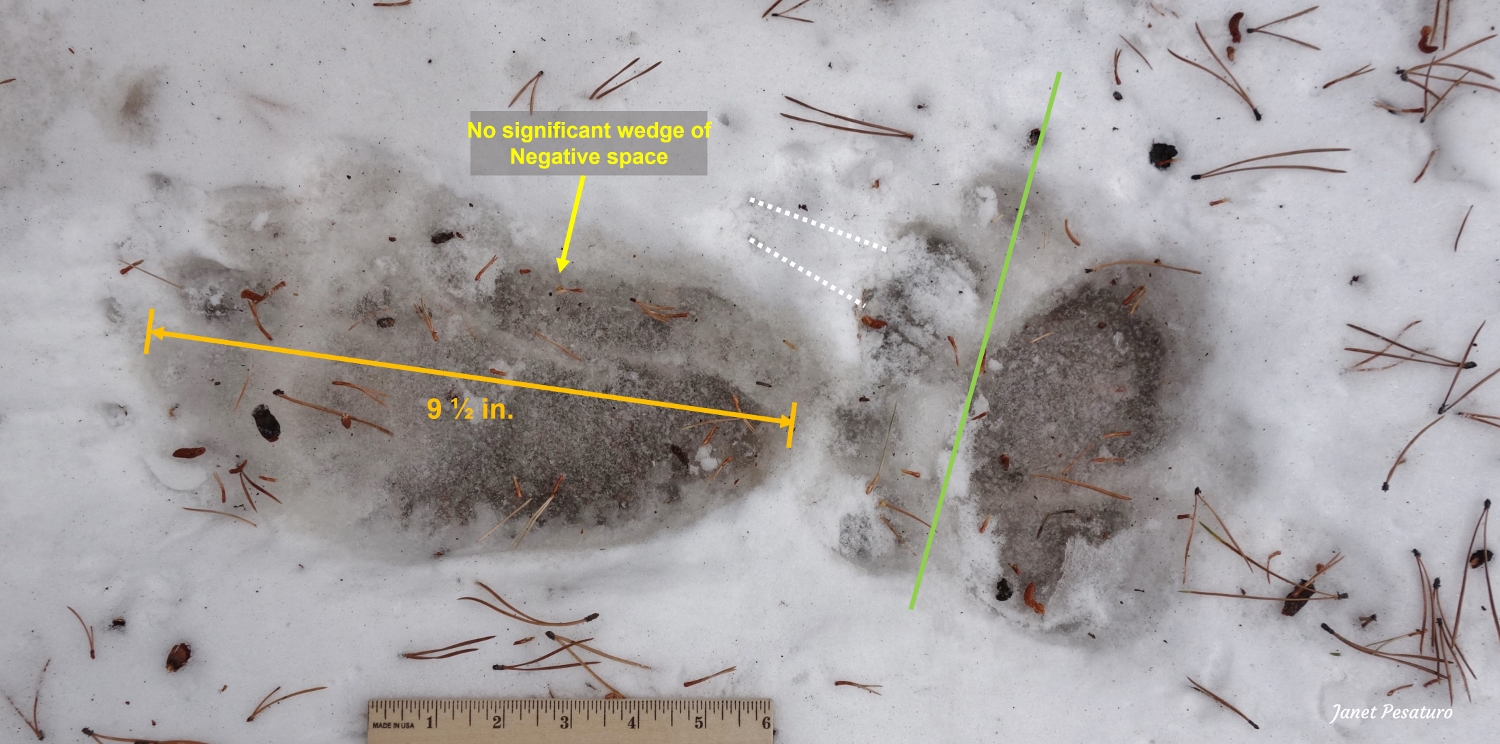
Known Black Bear Tracks
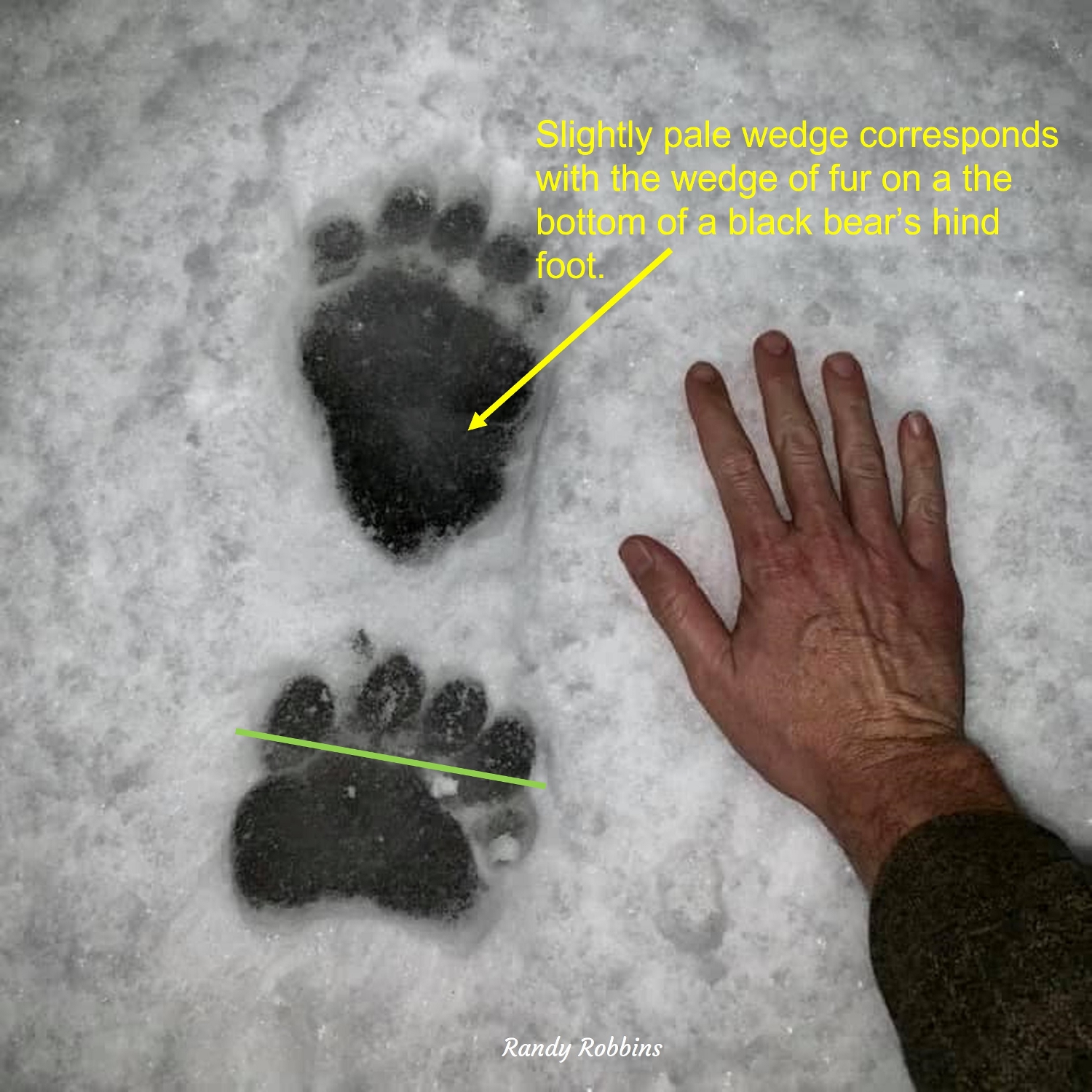
So What’s the Diagnosis?
I think in terms of probability when identifying tracks. Can I say with 100% certainty that the tracks in question are those of grizzly and not black bear? No. But all in all, the track characteristics are more consistent with grizzly than with black bear:
So if my Montana tracks were made by a black bear, it would be an unusually large one with unusually long claws, a slightly shallower arc, and perhaps less foot fur than typically seen in that species. Not impossible, but less likely than a normal size grizzly with normal size claws, and a slightly more prominent arc.
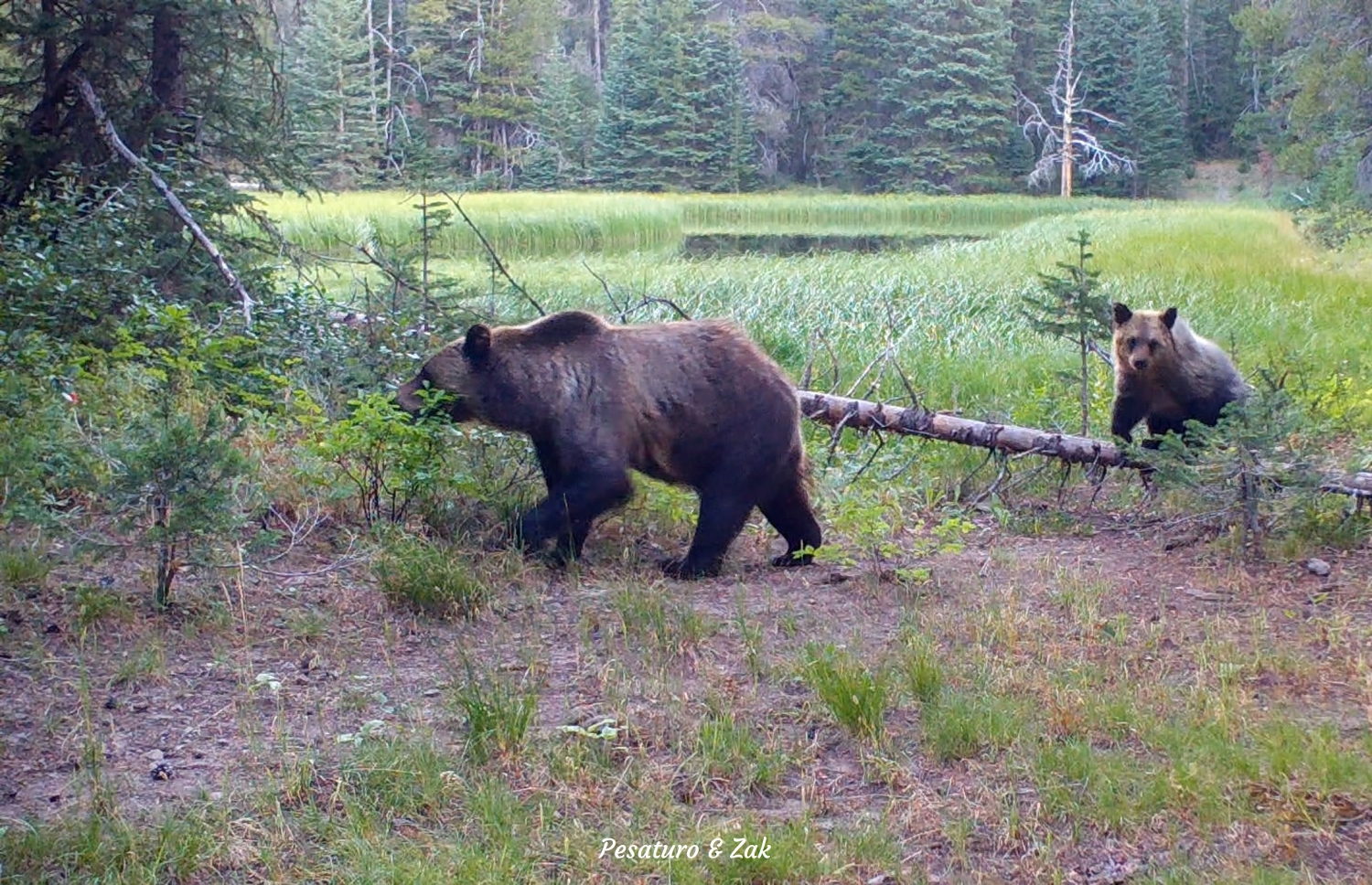
Sources
Elbroch, M. and C. McFarland. Mammals Tracks & Sign: A Guide to North American Mammals. 2nd Edition. Guilford, CT: Stackpole Books, 2019.
Rezendes, P. Tracking & the Art of Seeing: How to Read Animal Tracks and Sign. 2nd Edition. New York, NT: HarperCollins Publishers, 1999.
What do you think is the most reliable way to distinguish grizzly vs black bear tracks? Please share your comments and questions below.

My mind is buzzing with all this analysis. I’ll make an educated guess….it’s a bear.
Perhaps it was overkill? TBH I really hate taking all those measurements and tend to be an impressionist when interpreting tracks in the field. But, I have learned the OCD way is more often the path to accuracy.
I’m also convince it’s a Grizzly Track. The tracks fit the parameters for Grizzly and not a Black Bear. I checked against all my identification books as well and got: Grizzly. Great Exercise, Thanks! I love the part about Grizzlies having more weight in front tracks and Black Bears in the back tracks – makes sense.
Yeah I think a lot of people initially thought black bear because some grizzlies have a very shallow arc. They saw the more prominent arc in these tracks and thought it screamed black bear.
I had never heard of that difference in depth in front vs hind tracks so I was pretty excited to learn that too.
I found the article and image comparison very helpful; although over my head. Being in south Florida, I can guess most of my bear tracks to be from Florida black bears.
Yes, all black bear down there.
Perhaps I should have defined some terminology, such as negative space, interdigital, distal, proximal, etc. For better or for worse, I do assume a familiarity with tracking terms because it would be laborious to start from square 1 in each post. Sorry about that.
Hello Janet,
95% sure they are grizzly tracks for the reasons you mentioned. Nevertheless, there is a lot of diversity within each species. I have seen black bears with finger claws shorter than the digital pads, up to about 25% longer than the pads; and I have seen grizzly claws ranging in length from pad-length to nearly 3X pad length. Also note that grizzlies do have an arch to the hind foot, although it is usually less pronounced than in humans. Why North American black bears have a wedge of hair under the arch is a mystery, given that Asiatic black bears, brown bears, … lack that wedge.
You’ll find a great deal of information on features distinguishing species, sex, and age classes in my book GHOST GRIZZLIES AND OTHER RARE BRUINS: THE ART & ADVENTURE OF KNOWING WILD BEARS. It is temporarily out of print, because the cost of printing in color would now price the book at over $40 to $50. However, it will soon be available as an eBook at a cost of around $10. In any event, might I copy your photo of griz track in snow for something I am writing about tracking a griz through snow.
Hi Steve,
Thanks so much for your comment! It’s very helpful to get the opinion of an expert! And great to hear confirmation that there is considerable individual variation in feet and claws of both species. I think this gets lost on trackers, sometimes, and they tend to take rules of thumb as hard facts rather than just guidelines.
Also appreciate the pointer to your book – I’ll check it out.
Yes, you may use my photo, but please credit me.
-Janet